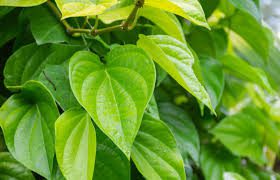For thousands of years, people have been using natural remedies from nature to treat various ailments. Persons have sought out healthy plants and chewed the leaves to consume their medicinal properties. Some of these plants have been used to soothe digestion and improve oral hygiene. However, caution is always exercised when chewing raw plants because certain risks can affect your health. Here’s a comprehensive look at different leaves you can chew for their health benefits.

1. Neem Leaves
When it comes to bad oral hygiene and gum disease, neem leaves have been linked with preventing these conditions. According to research, chewing fresh neem leaves daily can help with these conditions. These bitter leaves are revered in Ayurvedic medicine for their antibacterial, antifungal, and antiviral properties. Neem leaves have also been linked with supporting blood purification and immune function. However, research also details that neem leaves should not be excessively consumed, especially by pregnant women.

2. Betel Leaves
Research has indicated that betel leaves are a natural remedy for treating digestive problems. These leaves contain antioxidants, and they are renowned in South Asia for their stimulating and digestive properties. If you chew up some betel leaves, it can not only help with your digestion but also help freshen your breath. These leaves also act as a mild appetite stimulant if they are chewed after meals. However, you must not chew betel leaves with harmful additives like tobacco because it can negate their health benefits.

3. Guava Leaves
When it comes to alleviating oral health issues such as toothaches and swollen gums, guava leaves are an effective natural remedy. These leaves have antimicrobial properties. Another health issue that these leaves are used to treat is diarrhoea, and they are effective in promoting digestive health. While these leaves are generally safe to chew, they should not be consumed in an excessive amount because they may lead to nausea.

4. Peppermint Leaves
Studies have shown that peppermint leaves are a good remedy for improving digestion, reducing bloating, and relieving headaches. These leaves are renowned for their fresh flavour, making them a good option for fresh breath. Peppermint leaves also help with an upset stomach. However, those with acid reflux should consume peppermint leaves in moderation, as they can relax the lower oesophagal sphincter and exacerbate symptoms.

5. Curry Leaves
Curry leaves are effective in treating anaemia, digestive problems, and problems with hair growth. Curry leaves have also been linked to lowering cholesterol levels and aid in diabetes management. These leaves are rich in essential nutrients like iron, calcium, and vitamins A, B, and C. Persons are advised to not excessively consume curry leaves because it can lead to cholesterol levels and aid in diabetes management.

6. Holy Basil (Tulsi) Leaves
Holy Basil leaves, also known as Tulsi leaves, have been used to manage stress, boost immunity, and treat respiratory issues. These leaves are known for their anti-inflammatory, antimicrobial, and adaptogenic properties and they are also considered sacred in many cultures. However, it is best to consult a doctor before chewing tulsi leaves, especially for pregnant women and those on blood-thinning medications.

7. Katuk (Sweetleaf) Leaves
Katuk leaves have been used to support lactation in nursing mothers and improve overall bone health. These leaves are popularly used as a natural remedy in Southeast Asia. They are rich in protein, calcium, and vitamin C. However, these leaves can lead to lung problems over time if they are consumed in excessive amounts.

8. Moringa Leaves
Moringa leaves have been linked with increasing energy levels, improving digestion, and enhancing immune function. Studies have also shown that these levels are beneficial in managing blood sugar levels. These leaves contain antioxidants, vitamins, and minerals. Furthermore, the moringa tree is also known as the “miracle tree.” However, consuming too much moringa leaves can cause laxative effects.

